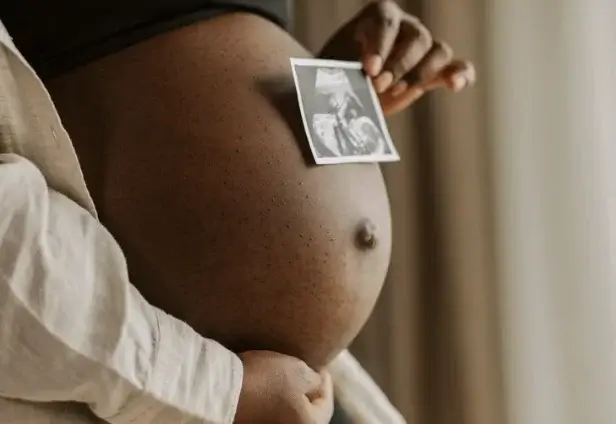What is it?
GBS is a type of bacteria that can live either in the rectum or the vagina. This means any gender can have this bacteria present.
How common is GBS?
Very common.
2 to 4 women out of 10 will have GBS.
Is GBS a health concern?
Usually, no. In fact, many will not even realise that they have Group B Strep present. However, this can become a concern if it develops in to GBS disease.
When does GBS become a problem[1]?
GBS becomes a concern if it develops and causes what is known as GBS disease. This most commonly impacts one of the following vulnerable populations:
a/ babies
- Group B Strep can be dangerous if it infects babies, with this being fatal for roughly 5% of babies infected with such.
- This is because GBS can result in infections such as meningitis and sepsis during a baby’s first few months
b/ pregnant women
- This is because it can then spread to the baby and cause health concerns here.
- 1 in 4 pregnant women carry GBS. However, do not worry – as this is something you can get tested for by your doctor, and given appropriate antibiotics before. This will greatly reduce the chances of passing GBS to your new-born.
- There is a very small risk that this could be harmful to your baby – so tests are often not done on the NHS. However, if you are worried then we would recommend that you speak to your GP and/or get a test privately.
- If you are worried then contact the Group B Strep Support helpline or look on their site here.
- ScreenMe’s vaginal health test will pick up 100% of the bacteria present in your vaginal microbiome. This includes Group B Strep and any other pathogenic bacteria. Find out more here:
c/ elderly people
- Serious GBS infection can occur in vulnerable adult populations, particularly the elderly.
- This can be fatal in some cases resulting in serious infections including sepsis and pneumonia.
How to prevent GBS
GBS can be prevented. The most effective ways of doing such is:
- Testing
- Pregnant women are able to be tested for GBS. Once identified, then appropriate measures can be put in place to limit the likelihood of GBS being passed to the new-born.
- This test is pain-free and is not something you should be concerned about.
- The test is done towards the end of pregnancy. This is because GBS is something that can come and go in the body – therefore it makes sense to test towards the end of your pregnancy, as this is when you will be giving birth and thus likely to pass it on to your child.
- For others, testing is not available on the NHS.
- Symptoms of GBS include:
- UTIs, an imbalanced vaginal microbiome, or other uncomfortable vaginal symptoms
- If you wish to test for GBS (&all other bacteria species present, then head over to our testing page!)
2. Antibiotics
- If a pregnant woman tests positive for Group B Strep, then they will often be given antibiotics during labour in order to reduce the likelihood of this being passed on to the child during birth.
- These antibiotics will be given during labour in order to be most effective against Group B Strep.
- By having antibiotics during labour – for those women who test positive for GBS, then this reduces the chance of their child developing GBS disease by 20 times!
How is Group B Strep spread?
This is something that is not entirely known yet!
While we know that pregnant women can pass GBS on to their children during childbirth, other ways in which GBS can be spread are not entirely known yet, and is something we would love to see more research in to!
Symptoms of GBS disease[2]?
Often GBS infection goes unnoticed in people, but in vulnerable populations it can make it more difficult to fight off an infection, leading to GBS disease. If GBS infection develops in to GBS disease then this can carry more serious health implications and is often associated with the following symptoms.
In newborns:
- Trouble breathing and/or abnormal changes to breathing
- Difficulty feeding
- Extreme fatigue
- Lack of responsiveness
- Changes in their skin colour – such as to a blueish colour
- Changes to heart rate
In other vulnerable populations:
- This will vary depending on the body part(s) that is affected. The most common of which are: pneumonia or sepsis infections.
Treatment of GBS disease
Treatment is usually with antibiotics. The type of antibiotic often depends on the kind of infection that is caused by the GBS bacteria.
Summary
Group B Strep can be something that many people worry about (particularly pregnant women). However, this is very rare and can be effectively treated and prevented in most cases.
We would recommend staying alert to signs and symptoms, and considering a Group B Strep test towards the later stages of your pregnancy.
If you need further support then we would highly recommend checking out the Group B Strep support page here, or contacting us at support@screenme.co.uk
[1] https://www.cdc.gov/groupbstrep/about/fast-facts.html
[2] https://www.nhs.uk/conditions/group-b-strep/




